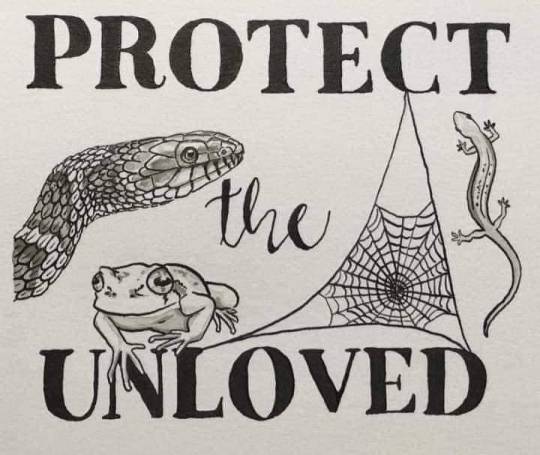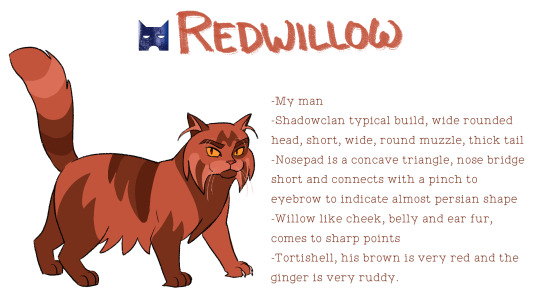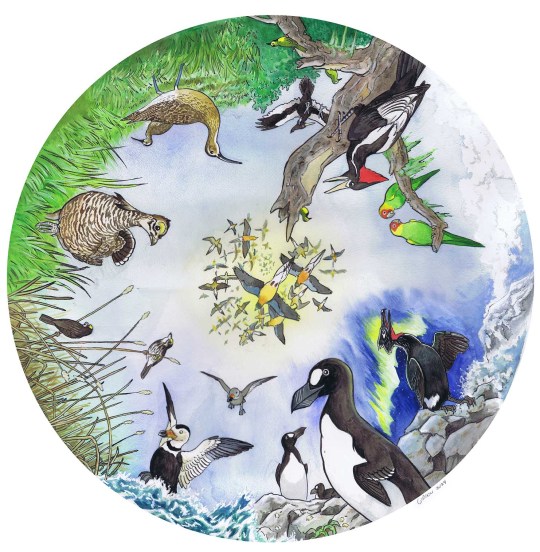#Extinct
Explore tagged Tumblr posts
Text

2.5"x3.5" thylacine doodle
55 notes
·
View notes
Text
In a monumental discovery for paleontology and the first of its kind "Mummy of a juvenile sabre-toothed cat Homotherium latidens from the Upper Pleistocene of Siberia"

Abstract The frozen mummy of the large felid cub was found in the Upper Pleistocene permafrost on the Badyarikha River (Indigirka River basin) in the northeast of Yakutia, Russia. The study of the specimen appearance showed its significant differences from a modern lion cub of similar age (three weeks) in the unusual shape of the muzzle with a large mouth opening and small ears, the very massive neck region, the elongated forelimbs, and the dark coat color. Tomographic analysis of the mummy skull revealed the features characteristic of Machairodontinae and of the genus Homotherium. For the first time in the history of paleontology, the appearance of an extinct mammal that has no analogues in the modern fauna has been studied. For more read here: https://www.nature.com/articles/s41598-024-79546-1
#sabertooth#homotherium#homotheriummummy#mummy#fossilmummy#extinct#paleontology#iceage#pleistocene#syberia#kitten#oneofakind
26K notes
·
View notes
Text

My old piece with quaggas.
watercolour on wallpaper back
5K notes
·
View notes
Text

#environment#animals#snakes#frogs#newts#amphibians#endangered#love#extinct#conservation#nature#stolen#true#reptiles#spiders#arachnids
33K notes
·
View notes
Note
If you're willing to share, what are your thoughts and opinions on the whole "dire wolf" situation?

They are not "Dire Wolves"
You can't do some gene editing to a gray wolf, and call it a dire wolf.
My feelings are summed up well in this article:
Scientists: No, those are definitely not 'resurrected' dire wolves
Scientists: No, those are definitely not "resurrected" dire wolves - Earth.com
660 notes
·
View notes
Text

Great Auk for a $15 Ko-fi supporter
The Great Auk (Pinguinus impennis) is also known as the Penguin. Though the name is contemporarily associated with an unrelated group of flightless birds from the southern hermisphere, these were named penguins by european explorers due to their superficial similarity to the Great Auks they were already familiar with. The Great Auk became extinct in the mid 19th century, and its extinction is believed to have been primarily caused by human exploitation. (x, x, x)
#i honestly could write a lot more for this species when it comes to facts but i dont want to overdo it#i do suggest reading about them though#art#my art#digital#digital art#clip studio#clip studio paint#csp#kofi#ko-fi#kofi doodle#kofi doodles#kofi request#doodle#request#illustration#stylized#linear#geometric#auk#great auk#Pinguinus impennis#garefowl#bird#birdblr#extinct#extinct animals#lazert#lazer-t
569 notes
·
View notes
Text
"Despite being arguably the most famous island chain in the world in terms of biodiversity, the Galápagos Islands are still surprising scientists today.
A bird seen and recorded by Charles Darwin on his visit to Floreana island in 1835 has been observed in the wild there for the first time in 190 years.
Darwin’s observations from the small, south-central island in the volcanic chain included the presence of a small, secretive bird called the Galápagos rail (Laterallus spilonota).
Just two years ago, several organizations began work on the large-scale Floreana Island Restoration Project. By removing invasive species that devastated native wildlife for generations, the local environment once again became a haven for species to recover and thrive.
The Galápagos rail, a land-bird endemic to the archipelago, has been severely impacted by these invasive species. It dwells on the ground, is extremely vulnerable to predators, and relies on dense, lush vegetation to hide in. But despite these dangers, the rail has proved to be a resilient and resourceful little bird.
The rails, locally known as Pachays, have been quick to return to restored islands. In 2018, six years after the conservation nonprofit Island Conservation successfully removed invasive species from nearby Pinzón Island, the Rails were among the first locally-extinct animals to reappear—along with other species such as the cactus finch.
It hasn’t been long since the Floreana Island Restoration Project began, but the rails have already repopulated it.
During their most recent annual landbird monitoring expedition on the island, teams from the Charles Darwin Foundation and Ecuador’s state agency for managing the archipelago recorded the bird’s presence at three distinct sites.
The birds were present and away from human habitation and agriculture, in a grassland shaded by guava trees. Confirmed findings include six acoustic records, two visual sightings, and one photograph. And it isn’t a coincidence that they’re back now—the site has been monitored for the Galápagos rail consistently since 2015, and this is the first year they’re back.
“The rediscovery of the Galápagos rail confirms what we’ve seen on islands worldwide—remove the invasive threats, and native species can recover in remarkable ways,” said Island Conservation’s Conservation Impact Program Manager Paula Castaño in a statement.
“This is an incredible win for Floreana, and fuels our excitement about what other native species might resurface as the island continues its journey toward ecological recovery.”
Next, scientists must use genetic sampling to determine whether these newly recorded birds are from a self-reintroduced lineage or whether there was a tiny population of rails that survived, undetected, for 190 years.
Island Conservation details how that’s not unheard of: on nearby Rábida, the organization’s restoration efforts led to the rediscovery of a species of gecko that was only known to science through subfossil records dated more than 5000 years old. They’d been living on the island in very low numbers for hundreds of years, but it was only once holistic restoration had taken place that they were able to increase their numbers to detectable levels.
MORE NEWS FROM THIS FAMOUS PLACE: 500 Giant Tortoises Reintroduced to Four Galapagos Islands in 2023
With a local population already establishing itself, chances are good for a successful reintroduction. Soon, it’s hoped, Floreana’s grasslands will be home to a large, thriving colony of rails.
“It gives us hope that there might be even more ‘extinct’ Galápagos species to find,” the statement read.""
-via Good News Network, March 3, 2025
#galapagos#galapagos islands#birds#birdblr#endangered species#extinction#conservation#extinct#ecosystem#wildlife conservation#good news#hope
702 notes
·
View notes
Text
I’d like to remind everyone that a photo of a nestling Kaua’i ō’ō exist and should give a BIG thank you to John Sincock who also has an unpublished paper about the ō’ō and his trips to Alaka’i swamp. This is the only known photograph of a nestling ō’ō. You can find this photo on the birds of the world website (linked in citation)

Sykes Jr., P. W., A. K. Kepler, C. B. Kepler, and J. M. Scott (2020). Kauai Oo (Moho braccatus), version 1.0. In Birds of the World (A. F. Poole, Editor). Cornell Lab of Ornithology, Ithaca, NY, USA. https://doi.org/10.2173/bow.kauoo.01
I hope the rest of his photos are out there somewhere. I was super lucky to be able to find his unpublished paper as well as some memos (shout out to Daniel Lewis who was able to send me the memos AND wrote about sincock and the ō’ō in his book Belonging on an Island : Birds, Extinction and Evolution in Hawai’i)
#kaua’i ‘o’o#kauai o'o#extinct birds#extinct#birds#Hawaiian honeyeater#recently extinct#moho#mohoidae
814 notes
·
View notes
Text

Fly in amber By: F. M. Carpenter From: Life Nature Library: The Earth 1962
277 notes
·
View notes
Text

The Mists of Lourinhã Eousdryosaurus encounters Lusotitan.
#my art#paleoart#sciart#dinosaur#lusotitan#eousdryosaurus#sauropod#ornithopod#herbivore#lourinha formation#portugal#jurassic#mesozoic#extinct#animal#nature#prehistoric
387 notes
·
View notes
Text

Redwillow! First listed in the eclipse allegiances with Whitewater as his mentor. He has some appearances in the first few omen of the stars books, but mostly is a generic background character. By Night Whispers however he is in my opinion characterized as a seasoned warrior, even though he is very new to the books. He is put in charge of leading a boarder patrol, and is seen after the battle of the border covered in wounds. Later in the book however he is part of the group that plays on the frozen lake, skidding across the surface on his belly. I love this segment because he is mentioned alongside senior warriors Crowfrost and Ratscar who yowl in amusement at his antics.
There is some of what I'm going to call fan interpretation of Redwillow that he is a loner in Shadowclan, but in the books his moderate regard by his own leader and senior warriors suggests to me instead that he was well liked, and integrated into the clan, even though it's never established who his kin is. That's why to me he becomes an example later on of a cat who's ambition is used to radicalize him to the Dark Forest. He doesn't start out a traitor to Shadowclan, on the contrary Redwillow spends his time in the dark forest close to his living clanmates. It isn't until the Forgotten Warrior that Ivypool points out Redwillow specifically multiple times when she's looking for cats that may have loyalties outside their clans. He never says anything to that point, rather his body language and exchanged glances are what makes her think so. Within the Last hope he makes several remarks in the Dark Forest about becoming the best warrior he can be, and that training in the Dark Forest makes training with Shadowclan feel like working with kittypets. Ivypool confronts him in a conversation with Hollowflight asking if he would let his weaker Clanmates die and he says "O-of course not" just that they had a lot to learn from the Dark Forest Warriors. Even with that I remember finding his final moments in the Last Hope a departure from his character, where he declares the Dark Forest his new clan, and that Blackstar's time is over.
Idk I just wanted more out of the radicalization of the clan cats while it was happening. I guess as someone who grew up with the internet I'm not a stranger to what anarchy and rebellion look like behind closed doors and personally felt that the concept of being isolated in a toxic in group extremely interesting, I found the the non-committal conversations of the dark forest trainees to be much more innocent than the showy posturing of competitive vitriol I've known such spaces to inspire. The fact that Redwillow and Breezepelt at the end of the battle were the only two warriors we know by name that sided with the Dark Forest to the end seems like such an underestimate to me. All I'm saying is that while I do love Redwillow for being an example of this, Clan cat rebellion to the Dark Forest could have been much more catastrophic than it was, and especially for the amount of plot and hype that it was given in universe. Add to all that the possible reading of Redwillow as a transmasc character that is radicalized into toxic masculinity and I want it to be known that i do love this character, but that most of that love comes from meta analysis and not from the text itself. He shouldn't have died twice in the Broken Code because truthfully he just didn't deserve it.
#Redwillow#shadowclan#Dark forest#warriors#warriors designs#warriorcats#warrior cats#warrior#Extinct
206 notes
·
View notes
Text

HYAENODONS
Adopt a puppy here www.palaeoplushies.com
153 notes
·
View notes
Text

Greater Jaws
(All assets are done in Blender & made by me.)
#prehistoric#extinct#3dart#blender#paleontology#palaeontology#palaeoart#paleoart#mosasaurus#mosasaur#ocean#fish
442 notes
·
View notes
Text

Anomalocaris plushie 🦐
#request#anomalocaris#anomalocaris plush#plush#sorry i love the shrimp emoji any excuse to use it#it is sold under many sellers#like gage beasley and various amazon sellers but there is no outright brand#mystery anomalocaris plush…#prehistoric#extinct#shrimp#cambrian plush#cambrian#plushie#plushies#plushblr#bugs#<-for CW purposes#transparent
3K notes
·
View notes
Text

Lost Americans wheel. Watercolor and ink.
#extinct#extinct bird#great auk#carolina parakeet#passenger pigeon#eskimo curlew#labrador duck#ivory billed woodpecker#bachman's warbler#heath hen#dusky seaside sparrow#spectacled cormorant
948 notes
·
View notes